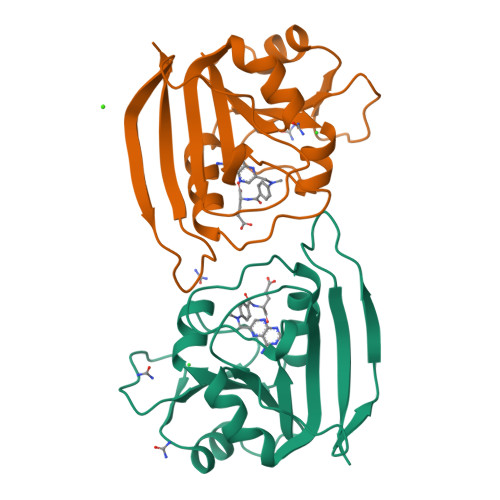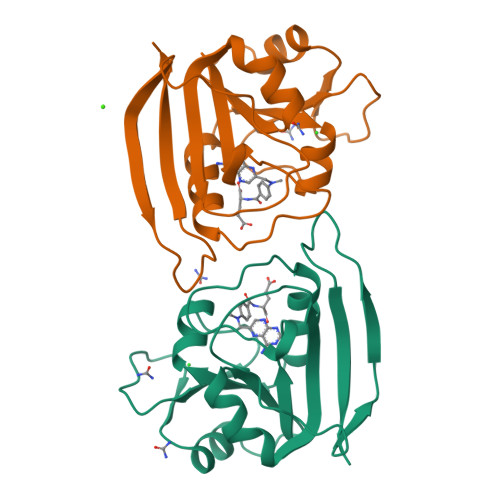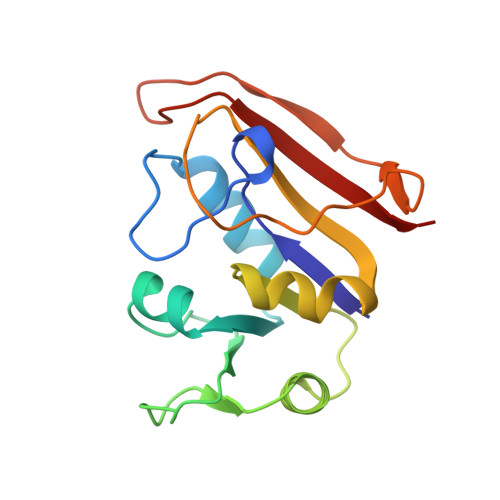The effect of denaturants on protein structure.
Dunbar, J., Yennawar, H.P., Banerjee, S., Luo, J., Farber, G.K.(1997) Protein Sci 6: 1727-1733
- PubMed: 9260285
- DOI: https://doi.org/10.1002/pro.5560060813
- Primary Citation of Related Structures:
1DDR, 1DDS, 1RBW, 1RBX - PubMed Abstract:
Virtually all studies of the protein-folding reaction add either heat, acid, or a chemical denaturant to an aqueous protein solution in order to perturb the protein structure. When chemical denaturants are used, very high concentrations are usually necessary to observe any change in protein structure. In a solution with such high denaturant concentrations, both the structure of the protein and the structure of the solvent around the protein can be altered. X-ray crystallography is the obvious experimental technique to probe both types of changes. In this paper, we report the crystal structures of dihydrofolate reductase with urea and of ribonuclease A with guanidinium chloride. These two classic denaturants have similar effects on the native structure of the protein. The most important change that occurs is a reduction in the overall thermal factor. These structures offer a molecular explanation for the reduction in mobility. Although the reduction is observed only with the native enzyme in the crystal, a similar decrease in mobility has also been observed in the unfolded state in solution (Makhatadze G, Privalov PL. 1992. Protein interactions with urea and guanidinium chloride: A calorimetric study.
Organizational Affiliation:
Department of Biochemistry and Molecular Biology, Pennsylvania State University, University Park 16802, USA.




















